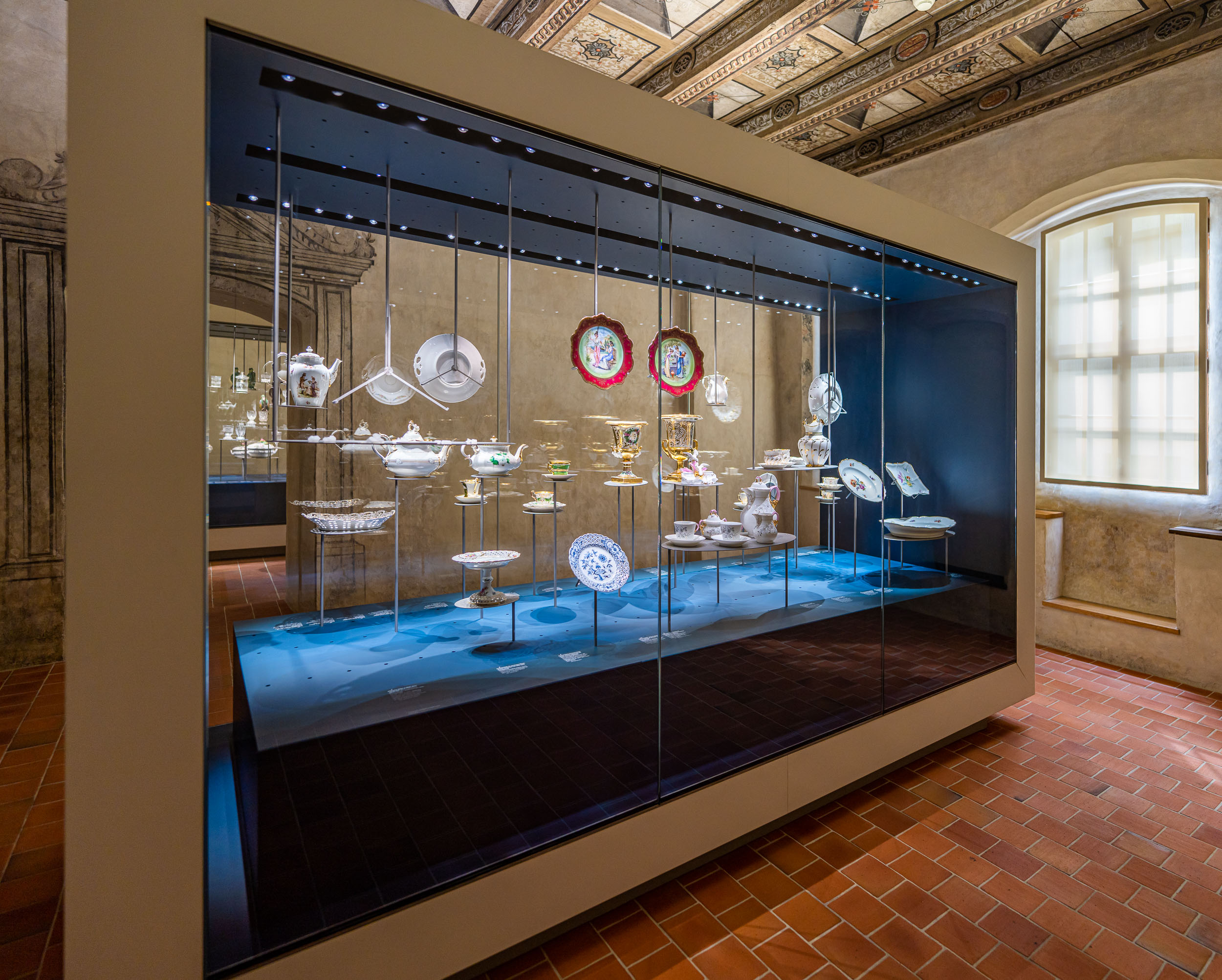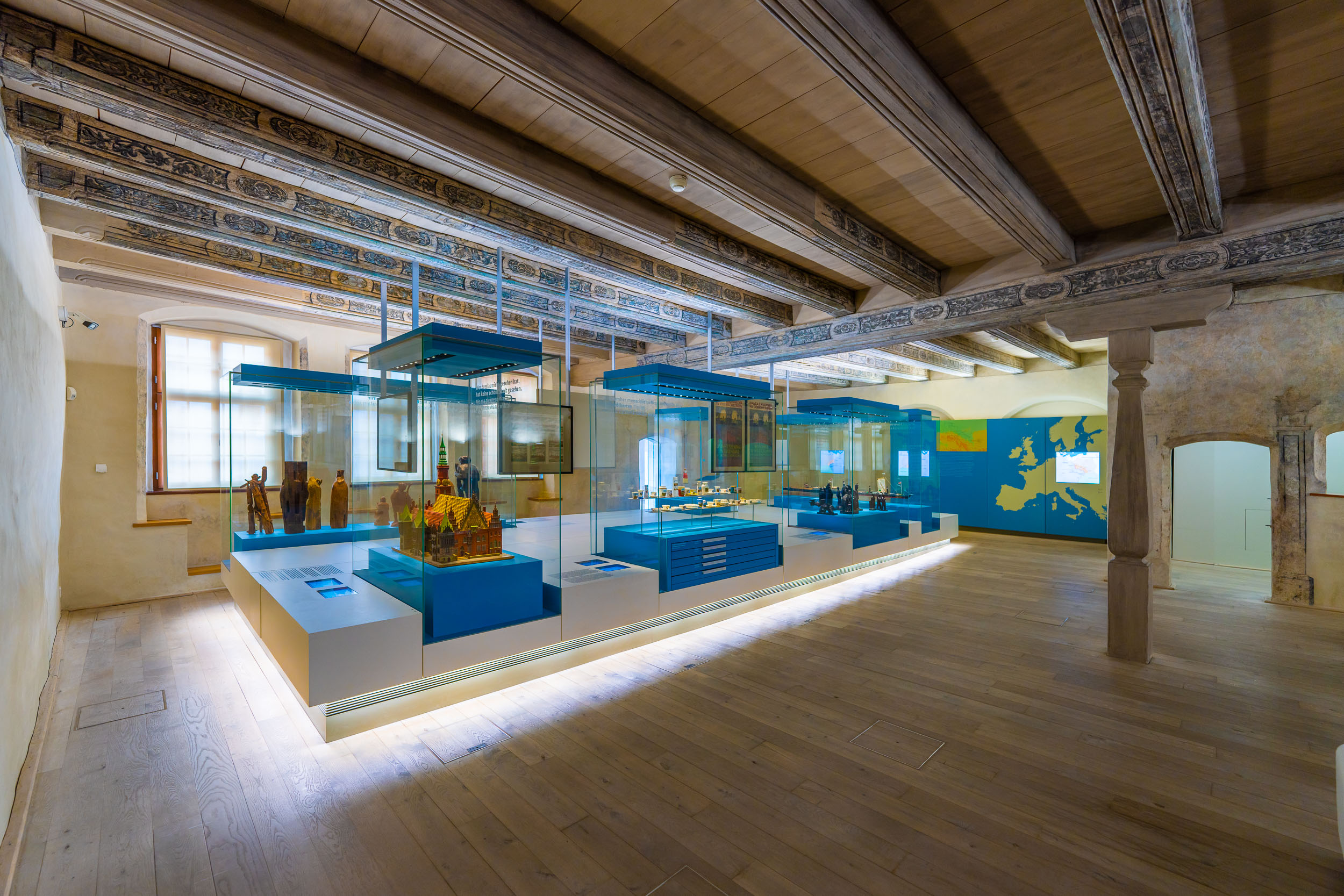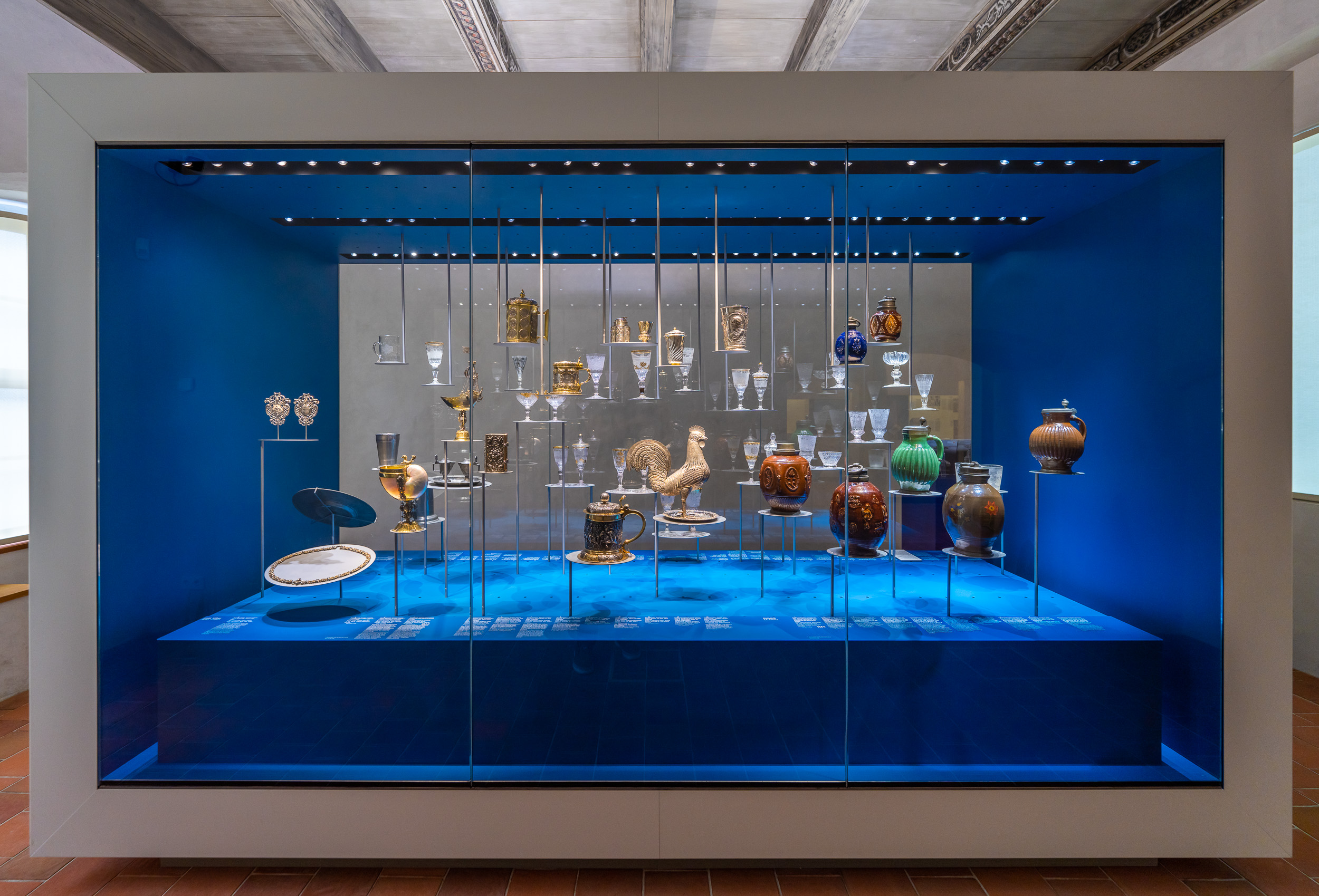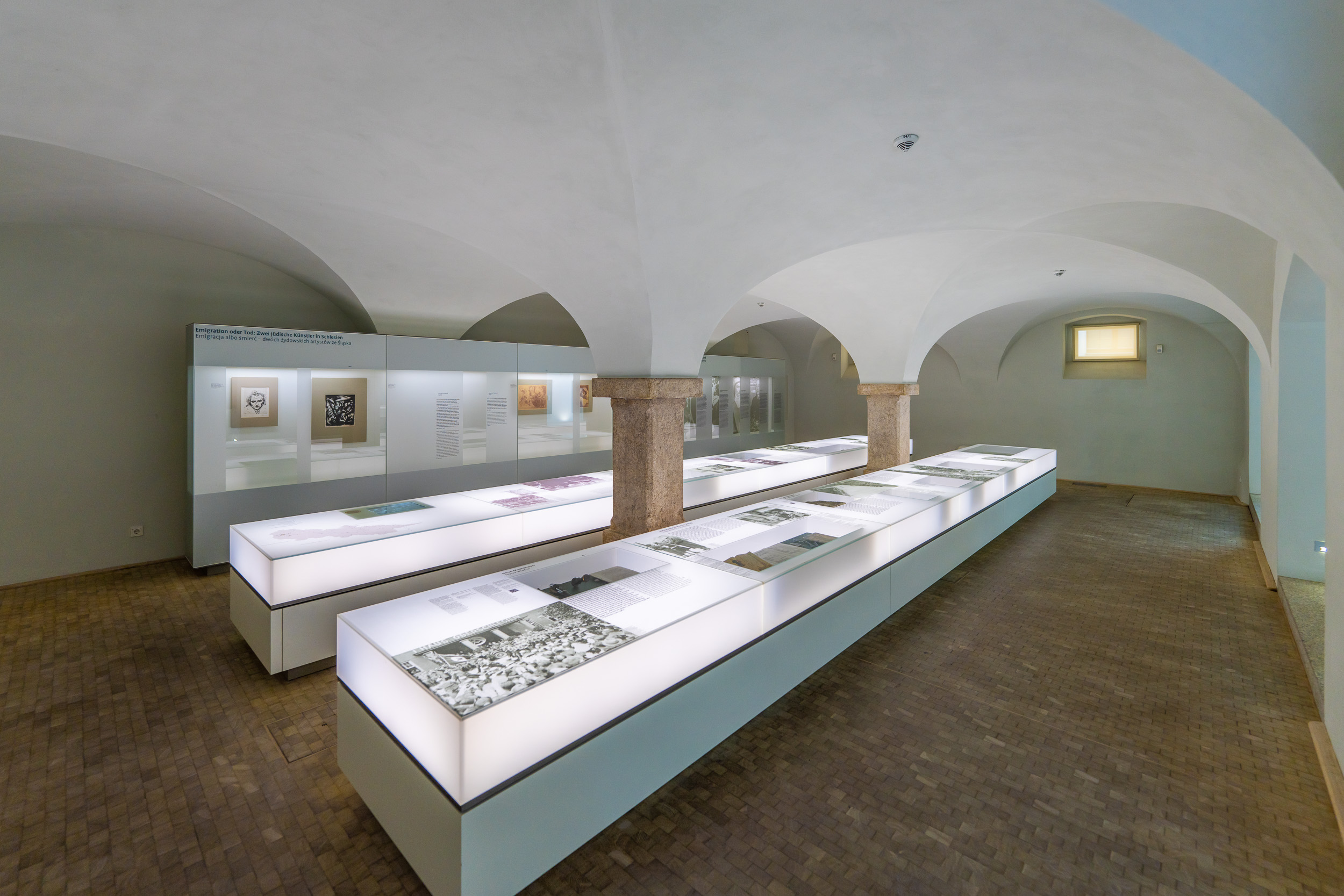
Silesian porcelain
Photographs
Porcelain Land Silesia
In room 11, where the museum exhibits Silesian porcelain, the Renaissance surfaces have been best preserved. The plaster bears wall paintings from around 1530, such as an illusionistic portal painting, friezes and floral ornaments. The brick staircase also dates from the 16th century. It was in use for around 200 years and was disposed of into the Neisse via a drainage channel.
In the large display case, the Silesian Museum provides an insight into its collection of Silesian porcelain, which is probably the largest in the world.
Silesia played an important role in the development of porcelain in Europe in the 19th and early 20th centuries, from a luxury item to a mass-produced product and an integral part of bourgeois culture.
SILESIA BECOMES GERMANY’S FOURTH MAJOR PORCELAIN REGION
In the 1830s, new porcelain factories were established in Waldenburg and Altwasser. Numerous factories were founded from the middle of the 19th century, especially in Freiwaldau (Sagan district), Tillowitz (Falkenberg district), Königszelt (Schweidnitz district) and Tiefenfurt (Görlitz district). The density of production facilities was particularly high in Silesia, where the best-selling porcelain factories in the German Empire were located, so that Silesia established itself as the fourth largest porcelain region in Germany alongside Bavaria, Thuringia and Saxony within just a few years.
EXPORTS TO THE USA
The manufacturers deliberately focussed on simple everyday porcelain for everyday use and for the hotel and catering trade. However, they also produced high-quality luxury porcelain that was only slightly inferior to the products of the established manufactories in Berlin or Meissen.
The porcelain manufacturers supplied the domestic and European markets as well as overseas. Special design lines and ranges were developed for the US market. The Second World War put an abrupt end to this development, but some companies in Poland picked up the tradition and continue to produce porcelain to this day.
See similar attractions!
On a 2000 m2 exhibition space, visitors can explore approximately 1000 exhibits from the history of Silesian culture.
)
)
)
)